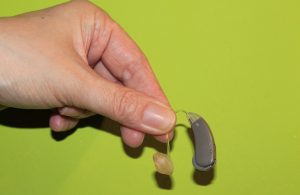Earwax, or cerumen, is a natural substance produced by glands in the ear canal. Its purpose is to clean, lubricate, and protect your ears from dust, dirt, and bacteria. Normally, wax makes its way out of the ear on its own through jaw movements like chewing. However, sometimes this process fails, leading to a build-up that can become hard and block the ear canal. This condition, known as impacted earwax, is a common issue that can cause discomfort and affect your hearing. Understanding the symptoms and available treatments is key to managing it safely.
Recognising the symptoms of impacted earwax
When earwax becomes impacted, it can cause a variety of noticeable symptoms. You might experience a feeling of fullness or blockage in the ear, almost like wearing an earplug. Many people report muffled hearing or a ringing sound known as tinnitus. Other signs can include earache, dizziness, and sometimes a persistent cough, which is triggered by the pressure of the wax on a nerve shared by the ear and throat. If you notice any of these symptoms, especially if they are accompanied by significant pain, discharge, or hearing loss, it is important to seek advice from a healthcare professional rather than attempting to solve the issue yourself.
What causes earwax to build up?
Several factors can contribute to the build-up of impacted earwax. Some individuals naturally produce more earwax than others, or have a wax consistency that is drier and less likely to move out of the ear. The anatomy of your ear canal also plays a role; those with narrow or particularly hairy ear canals are more susceptible to blockages. A primary cause of impaction, however, is the use of items like cotton buds, hairpins, or other objects to clean the ears. These tools tend to push wax deeper into the canal, compacting it against the eardrum. Similarly, regular users of hearing aids, earplugs, or in-ear headphones may find that these devices prevent wax from migrating out naturally.
Safe home care versus what to avoid
If your symptoms are mild, you may be able to manage the situation at home. The safest first step is using medical-grade olive oil or sodium bicarbonate ear drops, which can soften the hardened wax. Applying a few drops into the affected ear two to three times a day for several days can help the wax break down and work its way out. It is critical to avoid the temptation to insert anything into your ear. Using cotton buds can worsen the impaction and risk damaging the delicate ear canal or eardrum. Ear candling is also not recommended, as there is no scientific evidence to support its effectiveness and it carries a risk of burns and ear injury.
Professional ear wax removal options
When home remedies are not enough, professional ear wax removal is the safest and most effective solution. A clinician will first examine your ear to confirm the blockage and rule out other issues. One of the most common and effective modern techniques is ear wax microsuction. This procedure involves using a microscope to get a clear view of the ear canal while a gentle suction device removes the wax. It is a dry, precise, and generally comfortable method suitable for most people, including those with perforated eardrums. Another method is ear irrigation, which replaced the older technique of ear syringing. Irrigation uses a controlled flow of warm water to flush the wax out, and is effective but not suitable for everyone, particularly those with a history of ear surgery or infections.
The risks of leaving impacted earwax untreated
While often just a nuisance, leaving impacted earwax untreated can lead to more serious complications. Persistent blockage can result in chronic hearing loss, which can affect your daily life and communication. The trapped wax can also create a moist environment ideal for bacteria to thrive, leading to painful outer ear infections (otitis externa). In rare cases, severe impaction can cause vertigo or balance problems due to pressure on the vestibular system. Seeking timely treatment not only relieves discomfort but also prevents these potential secondary health issues, ensuring your ears remain healthy.
Prevention and long-term ear health
To prevent future build-ups, the best advice is to leave your ears alone. The ears are self-cleaning, and you should only clean the outer part with a cloth. If you are prone to wax build-up, using softening drops weekly or fortnightly can help maintain a clear canal. Regular check-ups with an audiologist or GP can also help manage the condition, especially for hearing aid users who may require routine professional cleaning. By adopting these simple habits, you can support your ears' natural processes and minimise the risk of impaction.



















